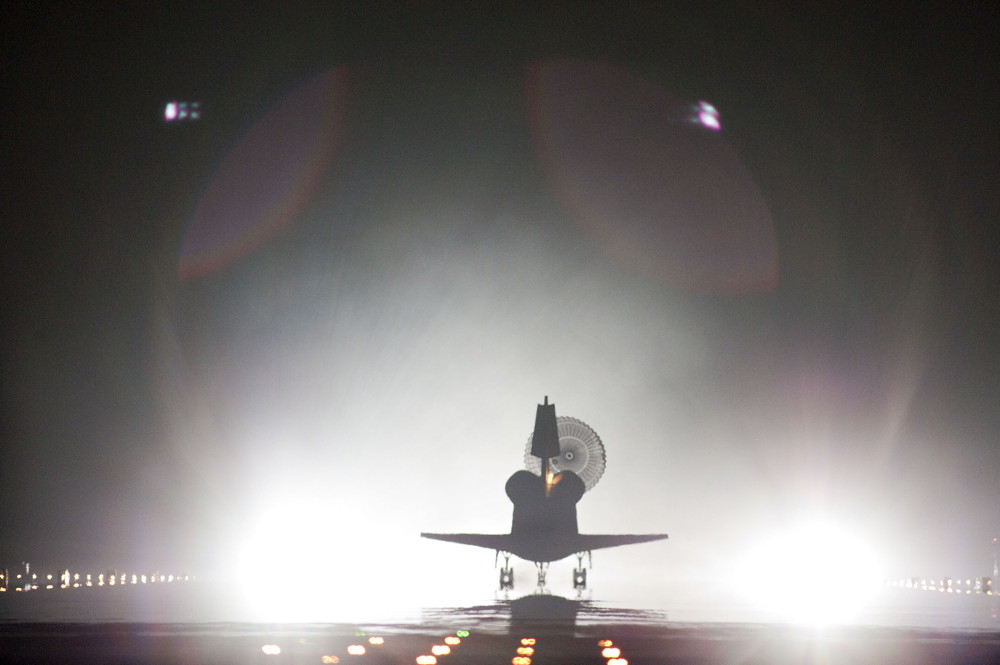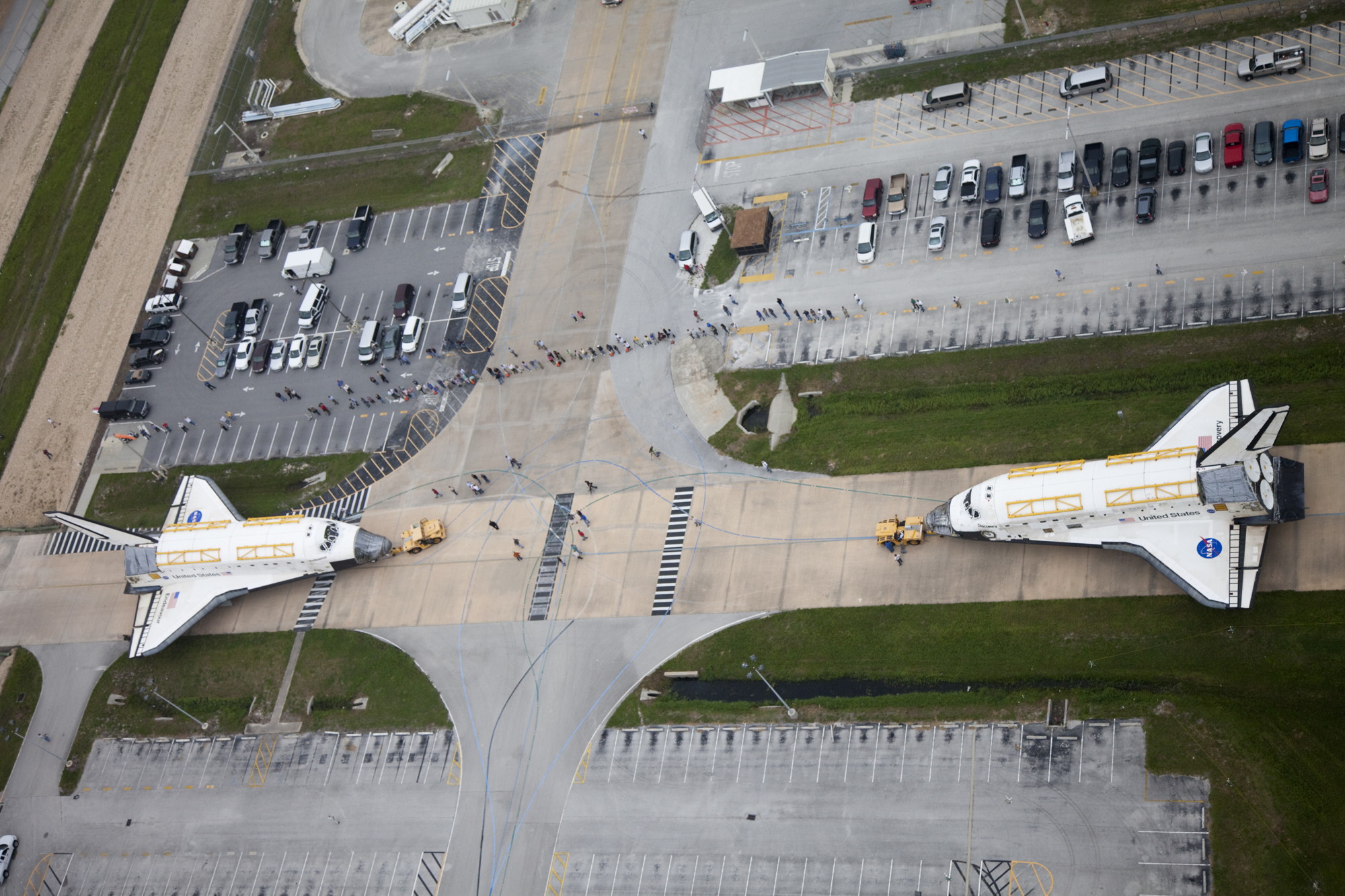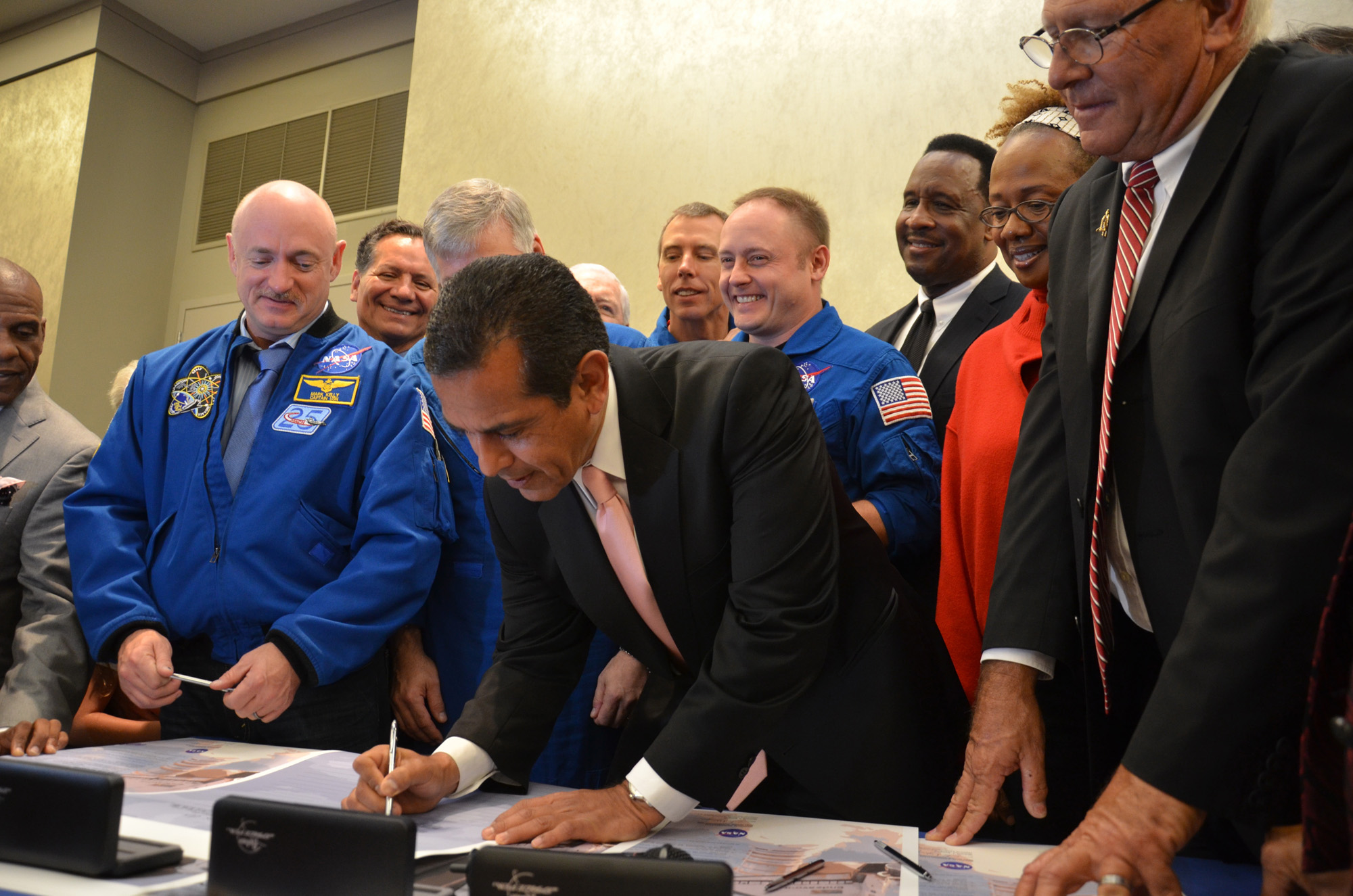
Two space shuttles down, two to go.
The prototype shuttle Enterprise arrived in New York City Friday morning (April 27) atop a specially modified 747 jet, on its way to Manhattan's Intrepid Sea, Air and Space Museum. Enterprise's flight came just a week after the shuttle fleet leader, Discovery, was delivered to the Smithsonian National Air and Space Museum in Washington, D.C.
NASA's two other remaining orbiters — Endeavour and Atlantis — are also headed to museum retirement homes soon. Endeavour, the agency's youngest shuttle, is the next to move.
Endeavour will go on display at the California Science Center in Los Angeles. The orbiter currently sits at NASA's Kennedy Space Center (KSC) in Florida, and it's slated to make the piggyback trip across the country this September, officials have said. [NASA's Shuttle Program in Pictures]

But the long flight may be the most uneventful part of Endeavour's journey. To get to its final resting place from Los Angeles International Airport, the shuttle will have to creep along city streets for about 12 miles (20 kilometers), perhaps at just 1 mph (1.6 kph) or so, according to the Los Angeles Times.
Endeavour flew 25 space missions during its career, which stretched from May 1992 to May 2011. It was built to replace the shuttle Challenger, which exploded shortly after liftoff in January 1986 in a tragic accident that killed all seven astronauts aboard.
Like Endeavour, Atlantis is now being processed at KSC. But it won't have to hop aboard a jumbo jet; the orbiter is destined for the KSC Visitors Complex, and it should make the short trip down the road in November, NASA officials have said.
Get the Space.com Newsletter
Breaking space news, the latest updates on rocket launches, skywatching events and more!

NASA retired its storied space shuttle fleet in July 2011 after 30 years of orbital service. A total of five shuttles reached space between 1981 and 2011, but only three of these vehicles remain. Like Challenger, the shuttle Columbia was lost along with its entire crew during a mission. The orbiter broke apart while re-entering Earth's atmosphere in February 2003.
Enterprise never made it to orbit. But the prototype shuttle performed a series of key approach and landing tests in the late 1970s, helping pave the way for its sister vehicles to reach space.
Enterprise had resided at the Smithsonian since 1985, and it had been on display at the museum's Steven F. Udvar-Hazy Center in Chantilly, Va., since 2003. But Enterprise was shifted to New York to make room for Discovery, which notched 39 spaceflights — more than any other spaceship in history — during its 27-year career.
You can follow SPACE.com senior writer Mike Wall on Twitter: @michaeldwall. Follow SPACE.com for the latest in space science and exploration news on Twitter @Spacedotcom and on Facebook.
Join our Space Forums to keep talking space on the latest missions, night sky and more! And if you have a news tip, correction or comment, let us know at: community@space.com.

Michael Wall is a Senior Space Writer with Space.com and joined the team in 2010. He primarily covers exoplanets, spaceflight and military space, but has been known to dabble in the space art beat. His book about the search for alien life, "Out There," was published on Nov. 13, 2018. Before becoming a science writer, Michael worked as a herpetologist and wildlife biologist. He has a Ph.D. in evolutionary biology from the University of Sydney, Australia, a bachelor's degree from the University of Arizona, and a graduate certificate in science writing from the University of California, Santa Cruz. To find out what his latest project is, you can follow Michael on Twitter.









